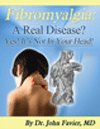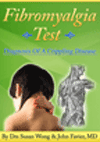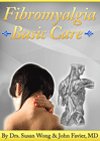Biodanza And Fibromyalgia
Biodanza & Fibromyalgia: A New Craze?
A recent article has shown an improvement in fibromyalgia sufferers with the use of a new approach to movements with a heavy connotation of expressions: Biodanza.
What is it?
Invented by a Chilean anthropologist, Rolando Toro Araneda, it is made of slow and relaxed dancing movements to the rhythm of soft music. The movements are based on what the music inspires you.
There are usually 3 phases: dancing alone, dancing with someone else and dancing in groups. There are no preset movements. The best way to look at it is the difference between walking rigidly in a very busy street where we are all strangers and dancing with music feelings together as buddies.
Here, we are with soft music dancing slowly without extreme movements. And it is this softness expressed within a non judgmental community, where everyone does it according to his/her own ability that is so beneficial for fibromyalgia sufferers.
The study suffers from shortcomings.
They thought it would have been unethical to randomize in 2 groups with one not getting the biodanze. What they have done was to get one group waiting for 6 weeks before getting their turn on the pretence of a waiting time. In a demanding population that has been explained what biodanza could do for them this is pure torture knowing that another group is getting it.
This increases their stress and frustration. Instead of having a placebo group, it constitutes a negative placebo group that will enhance the comparative results of the treated group. This fact is well reflected with 10 drop-outs in the waiting group compared with only 2 drop-outs in the treated group.
In addition, drop-outs are just not entered in the analysis. This is a difficult statistical parameter to take into account. But those drop-outs could very well have been those that would have made the study not statistically valid.
There are ways to ponder this but this study did not use them. The use of computerized statistical programs does not replace a statistician and tends towards more error.
That said, this study remains interesting in that it uses movements that are not extreme and speedy. Extreme movements, speed and exertion is exactly what is deleterious to fibromyalgia sufferers.
The "No pain - No gain" credo has absolutely no place in fibromyalgia and is counterproductive.
It would be interesting to repeat this study with a true placebo group and measure the perceived stress before and after in each group. I suspect that their perceived stress level is better after biodanza. The same probably goes for Tai-Chi, hypnosis, meditation, yoga or any other soft technique that reduces stress level. This is probably even better when some soft movements are made within the strict comfort zone of the patient. In fibromyalgia hypnosis allows to induce relaxation. Similarly with Tai Chi fibromyalgia sufferers are able to move with slow relaxing movements.
Another attraction in this method could be the ability to apply it on wheel-chaired sufferers. Music, upper-body movements, communion in gathering are attractive in this population who badly needs pro-active support.
Susan Wong (Dr Wong), MD
Ref:
Ana Carbonell-Baeza et al. Efficacy of Biodanza for Treating Women with Fibromyalgia
The Journal of Alternative and Complementary Medicine
Volume 16, Number 11, 2010, pp. 1191–1200
Knowledge Is Power
To understand why, what it is, how to care click on the books!
Pain Relief
Do you want to be heard?
Share your story








New! Comments
Have your say about what you just read! Leave me a comment in the box below.